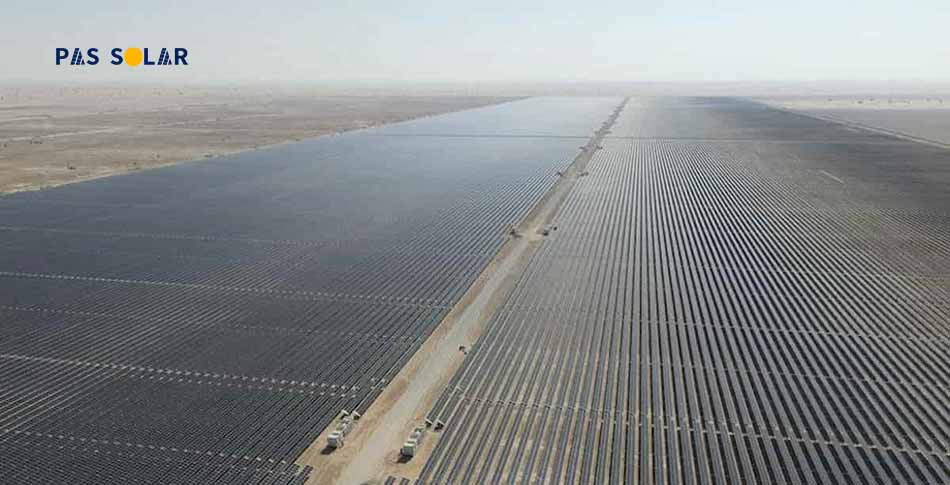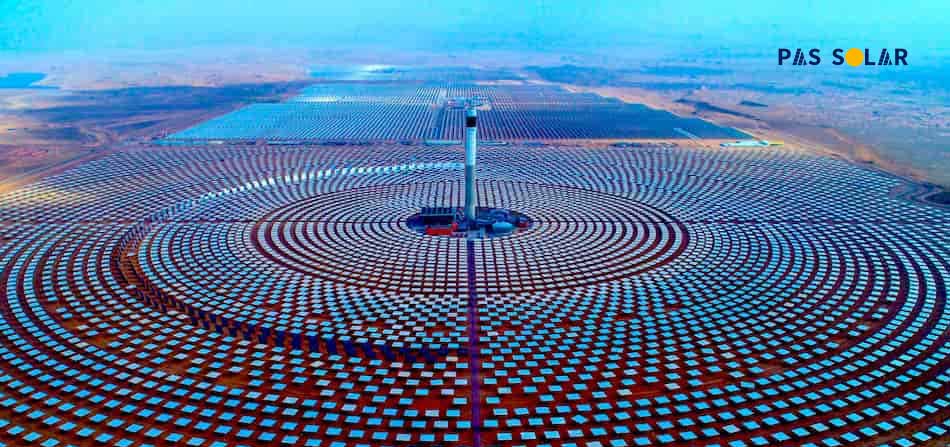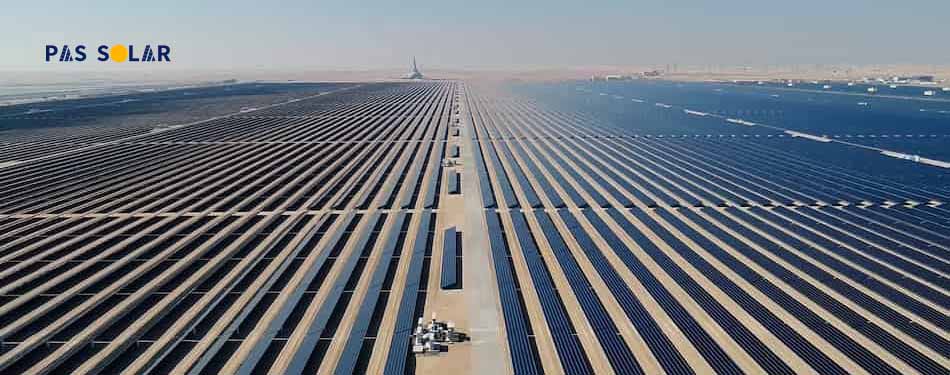The UAE ranked third in the world for concentrated solar power (CSP) production in 2013. In 2014, approximately 140 MW of solar power was generated in the UAE. The government estimated that savings between USD 1 billion and USD 3.7 billion could be achieved by reaching its renewable energy target, and now believes that the savings could be even greater with future uses of solar energy in the UAE and the changing outlook for fossil fuels and renewable energy prices.
The biggest solar power plant in the world
Future uses of solar energy in the UAE is going to be very popular because the UAE is building the world’s largest solar power plant in Abu Dhabi. This plant will diversify Abu Dhabi’s energy sector towards renewable sources, increasing Abu Dhabi’s total solar power capacity and promoting a greener environment through reduced CO2 emissions. This plant will be completely operational by 2022. The new plant:
- eliminates more than 2.4 million metric tons of CO2 emissions per year, which is equivalent to taking 470,000 cars off the road
- provides electricity to approximately 160,000 homes in the UAE
- provides one of the most cost-competitive rates for solar power set at AED 4.97 fils per kilowatt-hour
- boost Abu Dhabi’s solar power to about 3.2 gigawatts.
Shams 1 in Abu Dhabi
Shams 1 is the largest CSP plant in the world and is a sign of the growing future uses of solar energy in the UAE. It was launched by the late H.H. Sheikh Khalifa bin Zayed Al Nahyan, the then President of the United Arab Emirates, in March 2013.
The $600 million, 2.5 square kilometer plant can feed 100 MW of electricity into the national grid, enough to power 20,000 homes and divert 175,000 tons of CO2 per year from the atmosphere.
The plant is located in western Abu Dhabi and is considered the largest concentrated solar power (CSP) plant and the first utility-scale commercial solar project in the Middle East and one of the largest in the world, which improves the solar energy future prospects for Abu Dhabi.
The plant features several key innovations including the different types of solar inverters which help with the solar energy future growth, including specially designed booster heaters that use natural gas to increase the resulting steam from 380 degrees Celsius to 540 degrees Celsius, improving steam turbine efficiency and expanding power production. Check out the Solar inverter price in Dubai in our website.
The CSP plant also uses a dry cooling system to condense the exhaust steam stream, which significantly reduces the amount of water used by the plant compared to a similar facility.
Shams 1 is a joint venture between Abu Dhabi clean energy companies Masdar (60 percent), Total (20 percent), and Abengoa (20 percent) that all work toward improving the future uses of solar energy in the UAE.
He was recognized for his contribution to local communities at the 2016 MENASOL Conference & Exhibition in Dubai.
This award reflects the key role Shams 1 is playing in the UAE’s quest to increase the share of renewables in the energy mix and the positive difference it is causing to the quality of life of local residents.
Concentrated Solar Power (CSP) Project
As part of Dubai’s clean energy strategy to generate 75 percent of Dubai’s power from clean energy and improve the future possibilities of solar energy in the UAE by 2050, Dubai will build the most considerable single-site concentrated solar power (CSP) project in the world, which is expected to begin generating power within the next five years which will expand the future uses of solar energy in the UAE.
The project will surpass the world’s largest existing CSP tower in Morocco, which has a power generation capacity of 150 MW.
The new CSP project will provide affordable power at less than 8 US cents per kilowatt-hour, as it will be generated on-site to be located at the existing Mohammad Bin Rashid Al Maktoum solar park.
Circular rings of solar mirrors called heliostats will direct sunlight toward a central collection tower, where the sun’s rays will drive a steam turbine to generate concentrated solar power.
What does the future of solar energy look like for the UAE?
The solar project and solar park, when completed, are expected to guarantee the future of solar energy in the UAE and reduce carbon emissions in Dubai by more than 6.5 million tonnes of harmful CO2, helping Dubai and the United Arab Emirates meet their commitment to the Paris Agreement to keep the increase in temperature due to global warming below 2 degrees Celsius this century. The future uses of solar energy in the UAE are going to be vast.
The benefit of using concentrated solar power is that it can be stored for 8 to 12 hours after generation, which can help power the emirate overnight. The first phase of the new CSP project should be operational in 2021.
Mohammed bin Rashid Al Maktoum Solar Park
The emirate of Dubai announced in January 2012 that a 1 GW Mohammed bin Rashid Al Maktoum solar park would be built in phases and completed by 2030 at Seih Al Dahal, some 50 km south of Dubai City, to fulfill its renewable energy supply target.
The Mohammed bin Rashid Al Maktoum Solar Park is the largest single-site solar panel system in the world, based on the IPP model, which can increase the future uses of solar energy in the UAE. It will produce 1,000 MW by 2020 and 5,000 MW by 2030. The first step of this project started working in 2013 with a capacity of 13 MW.
The second phase started operations in April 2017 with a total of 200 MW. The third phase will begin operations in 2020 with a total of 1,000 MW, while the fourth phase of the project will begin operations in the last quarter of 2020 with a capacity of 5,000 MW. The project will have the largest solar tower on earth, at 260 meters.
This project was launched under the Dubai Clean Energy 2050 Strategy to increase the share of clean energy in Dubai’s total energy production to 7% by 2020, 25% by 2030, and 75% by 2050. Also, visit solar panel suppliers in Dubai.
This plant may be responsible for reducing approximately 15,000 tons of carbon dioxide per year. The park is expected to cover 40 square kilometers eventually. A 200 MW plant is currently under construction, part of the same complex, which can increase the future uses of solar energy in the UAE. The park will produce 5,000 MW by 2030. The future outlook of solar energy is bright for the United Arab Emirates. For more information, call our solar equipment shop.





